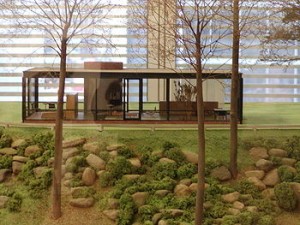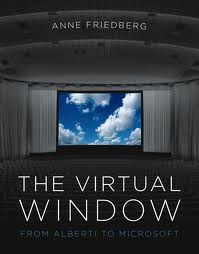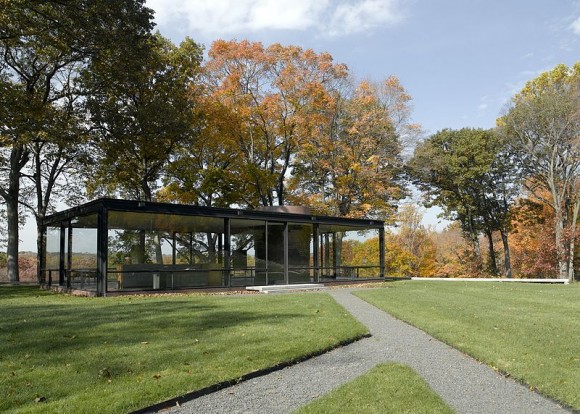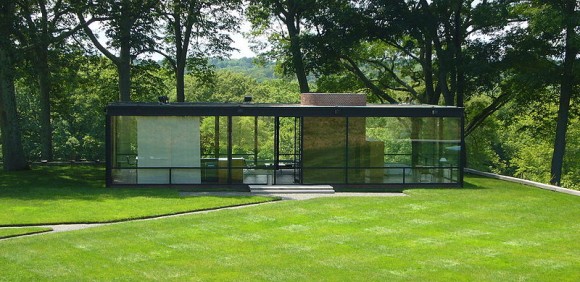Architectures of Glass
By Asher Crispe: February 4, 2011: Category Inspirations, Quilt of Translations
Buildings speak volumes about their builders as well as their residents. For designers and architects alike, building materials signify more than just functionality. They embody or incorporate rich philosophical meaning. Walls and windows, floors and ceilings, address a host of psychological and spiritual dimensions carried right down to the minute detail.
Are not all of our buildings a kind of prosthesis—an extension of our skin, an enlargement of the capsule of self?
In order to address this question, we need to first reflect on the abstract nature of embodiment and uncover what could be termed a ‘Jewish’ sense of a threefold interrelationship between the body, the house (the classic building) and the feminine.
Issuing from a biologically based association between the feminine and corporality, we find the first half of the equation in the often cited Talmudic expression: “His wife is his house”. Just like a fetus which is ‘housed’ in the womb of its mother, so too, a soul or human subject is contained by or dwells within the body. From here, the expositors of Jewish esotericism develop the idea that each person—regardless of one’s biological sex—is divided into relative masculine and feminine aspects that shift depending upon context.
In a counterpart statement, the Talmud puts forth the notion that: “His wife is (as) himself.” In Hebrew, the word k’gufo (as himself) may be read like/as his body. The implication is that the psyche is married to the body—they are one and the same. Talmudic and kabbalistic logic meld the idea of the body with that of the house affectively weaving them into a single concept. (By way of an aside, we should note that the employment of gendered concepts in these reflections is filled with complexities which will have to be dealt with in a more sustained manner in another discussion.)
The body is the cultural border, the primal horizon of social interaction. With skin for walls and the orifices as windows, the domicile of the body presents an opportunity for the division of our world and experience into discreet territories—an outside and an inside. Opacity enforces the dominance of this distinction. A duplicity arises out of the sense of separateness of one’s private inner world from the sphere of public life. This may prompt questions as to whether or not one is the same person on the outside as on the inside.
 We are in a new age of transparency. Our ways of building have changed. The architectures of today reflect a new social scene—one where the lines of separation are being rapidly erased. The dissolving of our absolute sense of inside and outside can be in part attributed to the progress in Materials Science and the abundant use of diaphanous substances such as glass in modern building. As a consequence, the self of today stretches in-between the external and the internal.
We are in a new age of transparency. Our ways of building have changed. The architectures of today reflect a new social scene—one where the lines of separation are being rapidly erased. The dissolving of our absolute sense of inside and outside can be in part attributed to the progress in Materials Science and the abundant use of diaphanous substances such as glass in modern building. As a consequence, the self of today stretches in-between the external and the internal.
To draw a parallel from the foundational text of Chassidic philosophy known as the Tanya, we see a special refocusing upon the spiritual qualities of the beinoni, the ‘intermediate’ state of existing, the manner of being in-between the extremes of the insider and the outsider with respect to conscious of the Divine. ‘In-betweenness‘ underwrites the human condition. It serves as a fundamental existential category. Extrapolating from this, we encounter within architectural theory, a conviction that the construction of interstitial spaces is but a projection of an interstitial self. Taken to the extreme, we are increasingly outside the ‘inside/outside’ distinction. And there is great advocacy for such a move within the Torah.
In the Torah commentary of Rabbeinu Behaya (the rabbinical luminary from the mid-thirteenth century) on the construction of the ark of the covenant (Exodus 25:11), he transposes the material design of this container of ‘ultimate meaning’ from its simple incarnation as a physical box, to a figurative quality of all true scholars. The ark, whose inside and outside are both covered with gold, exhibits a symmetry between its interior and outer appearances. Built to house and transport the Torah, the functionality of the ark is mirrored in the scholars who embody and carry the Torah throughout the ages.
Furthermore, Behaya expands on this correspondence, quoting the Talmudic adage that: “a true scholar will be (on the) inside the same as on his outside,” just as the ark is identical with its gold covering inside and out. The integrity of a sage is tied to being the same person inside and out. In the classic kabbalistic work, Tikkunei Zohar, we find an important echo and clarification of this sentiment: “inside like the outside (means) the equivalence of mouth and heart.” Not being on the inside as one appears outwardly or vice versa is likewise termed as being “one way with the mouth and another way with heart.” This two-faced schism, where a person says one thing but means another or feels one way but acts in a manner that is inconsistent or antithetical with that feeling, is a fatal flaw in the pursuit of truth and knowledge. The “Torah” cannot be housed in such a vessel. Consistency in all realms is obligatory.
There is another beautiful insight lodged in the Hebrew expression “toko k’baro” [תוכו כברו] “his inside is like is outside” that extends this principle to the various forms of Divine manifestation. The hyper-literal exhibition of this idea can be highlighted as follows: toko (תוכו) “his inside” has four letters which puts the two letters כו in the middle of the word. These letters are kaf and vav which equal 20 and 6 respectively. Added together, their sum is 26, the value of the Tetragrammaton, the essential name for God in the Torah (י 10 ה 5 ו 6 ה 5). Similarly, the word c’baro (כברו) “like his outside” has four letters with the two outside letters being the same as in our previous case—kaf and vav. Consequently, we have another 26 or hint to the Divine name forming the outside of the word. For the kabbalists, this veiled allusion affirms that God must have the same self-consistency. Their contention is that there is no duplicity within the Divine if only we look deep into the matter.
Continuing with Rabbeinu Behaya, we find that he takes this opportunity to point out that words of Torah are compared to glass in the book of Job 28: 17: “Gold and glass cannot equal it….” So while no material completely compares to the Torah, expressions of Torah may find a symbolic proxy in the unique properties of glass which is so refined and clear that a person is allowed to see right through it. Glass retains a semblance of surface while at the same time permitting a view of the interior which it encloses. The transparency of glass offers proof positive that a person is one and the same inside and out.
Being that transparency is requisite for sagacity, it is not completely shocking to find that King Solomon (Shlomo), ‘the wisest of all men,’ was privileged to be the owner of a glass house. While the idea of a glass house would seem appropriate to the modern age of architecture—we might evoke the famous Glass House (also known as the Johnson House) built in 1949 by master architect Philip Johnson—we nonetheless find a striking anticipation of this innovation in the ancient world.
In a medieval Aramaic work known as the Targum Sheni on the book of Esther, we find a striking description of King Solomon entering into his glass house in order to receive the Queen of Sheba. When she looked in and saw him, the glass gave her the illusion that he was immersed in water. Water, the sages teach, is also symbolic of Torah. Thus, the king in water would be suggestive of a person who was entirely devoted to the wisdom of the Torah. His inner being was synced to his outer appearance.
In Aramaic the word for glass is zugeta which has an etymological affinity with the word zavag meaning to join, to couple or to match as well as the word zivug signifying marital union. Glass, in reuniting the inside with the outside, matching the interior with the exterior, confirms and authenticates the nature of the reality constructed.
 In her book The Virtual Window: From Alberti to Microsoft, Anne Friedberg writes about the novel properties of glass: “As the boundaries between interior and exterior dissolve in transparency, as the opacity of the wall dematerializes, glass materialized the architectural exchange between window and wall, wall and window.” (123) She points out that the “Berlin poet and novelist Paul Scheerbart’s vision of a utopian future was based in a near-messianic belief in the material properties of glass.” (115) Glass will transform architecture and thereby signal the transformation of society at large. Friedberg also references architectural theorists such as Sigfried Giedion for whom the material of glass meant that “the interior and exterior are seen ‘simultaneously.’” (119)
In her book The Virtual Window: From Alberti to Microsoft, Anne Friedberg writes about the novel properties of glass: “As the boundaries between interior and exterior dissolve in transparency, as the opacity of the wall dematerializes, glass materialized the architectural exchange between window and wall, wall and window.” (123) She points out that the “Berlin poet and novelist Paul Scheerbart’s vision of a utopian future was based in a near-messianic belief in the material properties of glass.” (115) Glass will transform architecture and thereby signal the transformation of society at large. Friedberg also references architectural theorists such as Sigfried Giedion for whom the material of glass meant that “the interior and exterior are seen ‘simultaneously.’” (119)
Glass is uncanny. That we would choose this material as means of surrounding ourselves suggests that we are open to being one and the same inside and out. Having nothing to hide, being able to allow others to see us as we really are, reflects an openness to transparent social exchanges. And we are becoming the transparent society.
We are well into the age of building with glass. We hope that this gives us the right exposure. Every step towards a glass house, or even just larger windows, reinforces the awareness that we don’t dwell alone and that it is perhaps time to become in tune with the materials we build with.
Architectures of Glass,
























;)
;)
;)
;)
;)
;)
;)
;)
;)
;)
